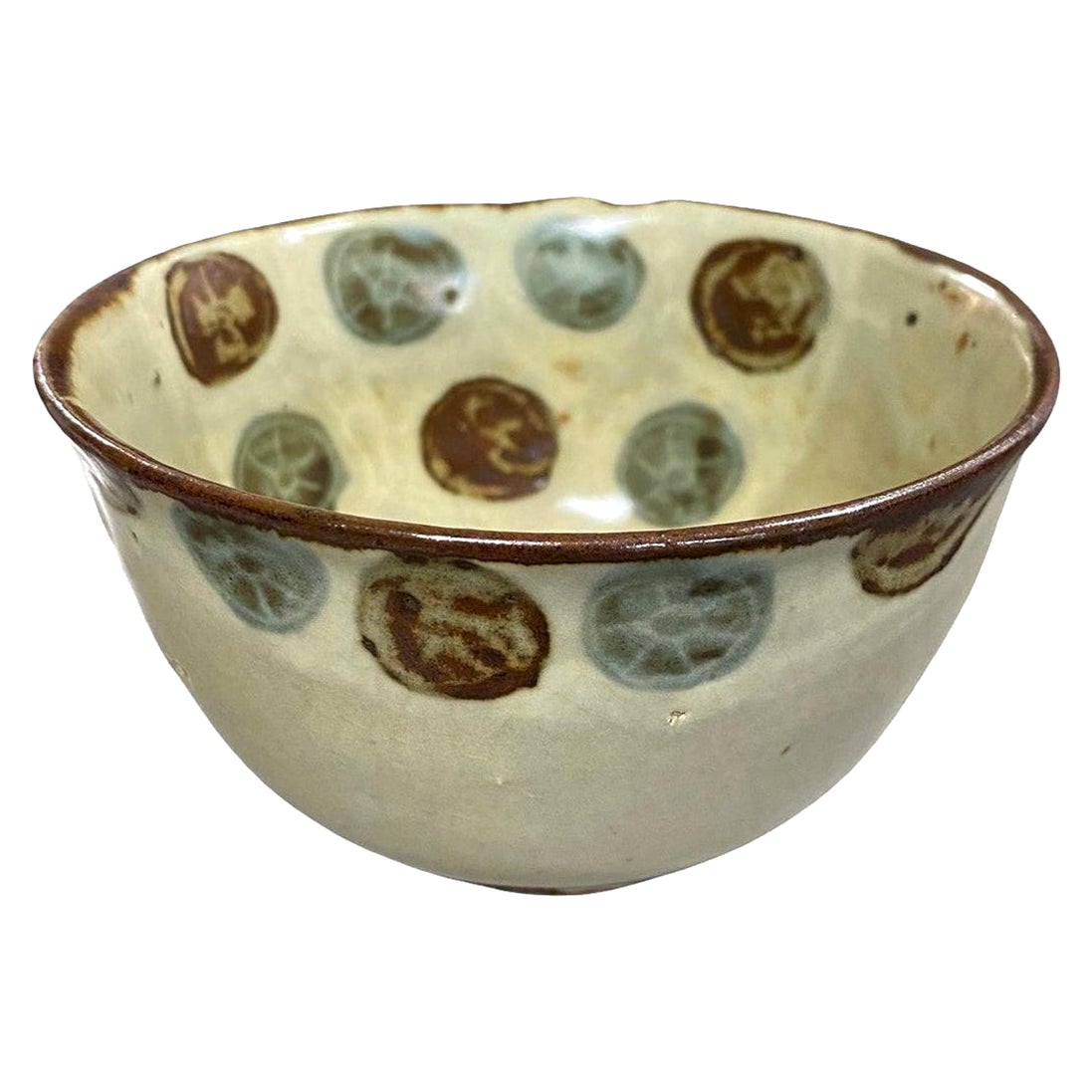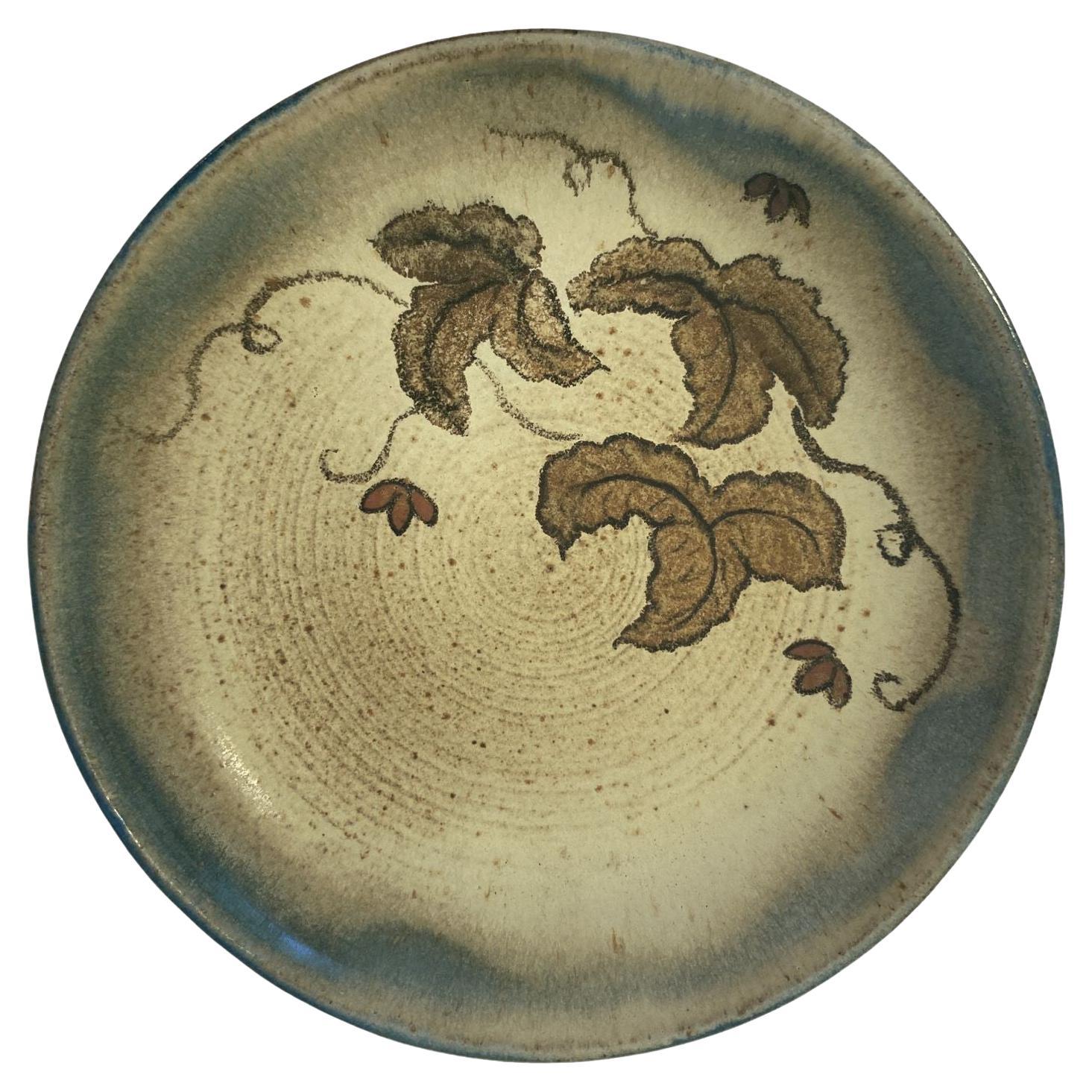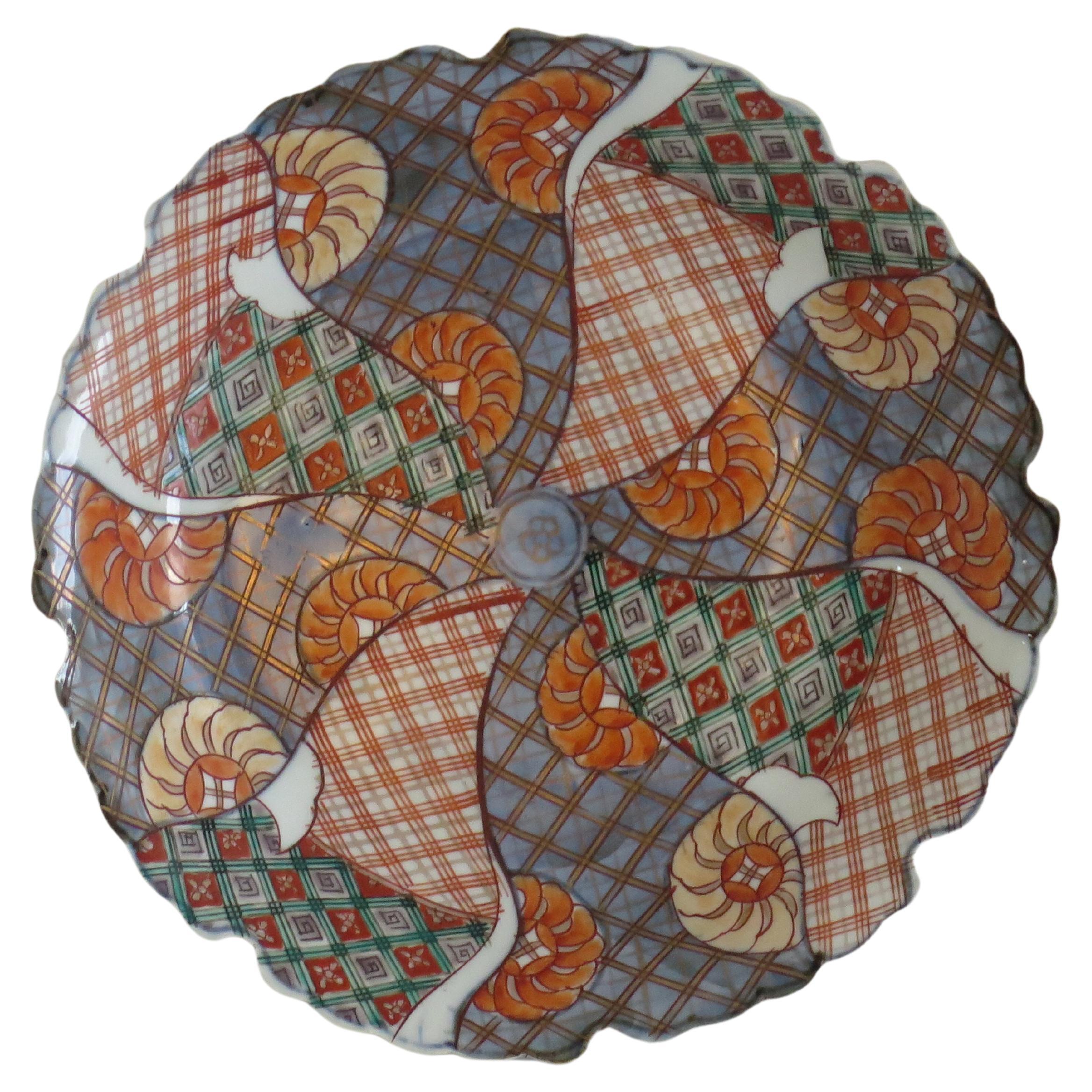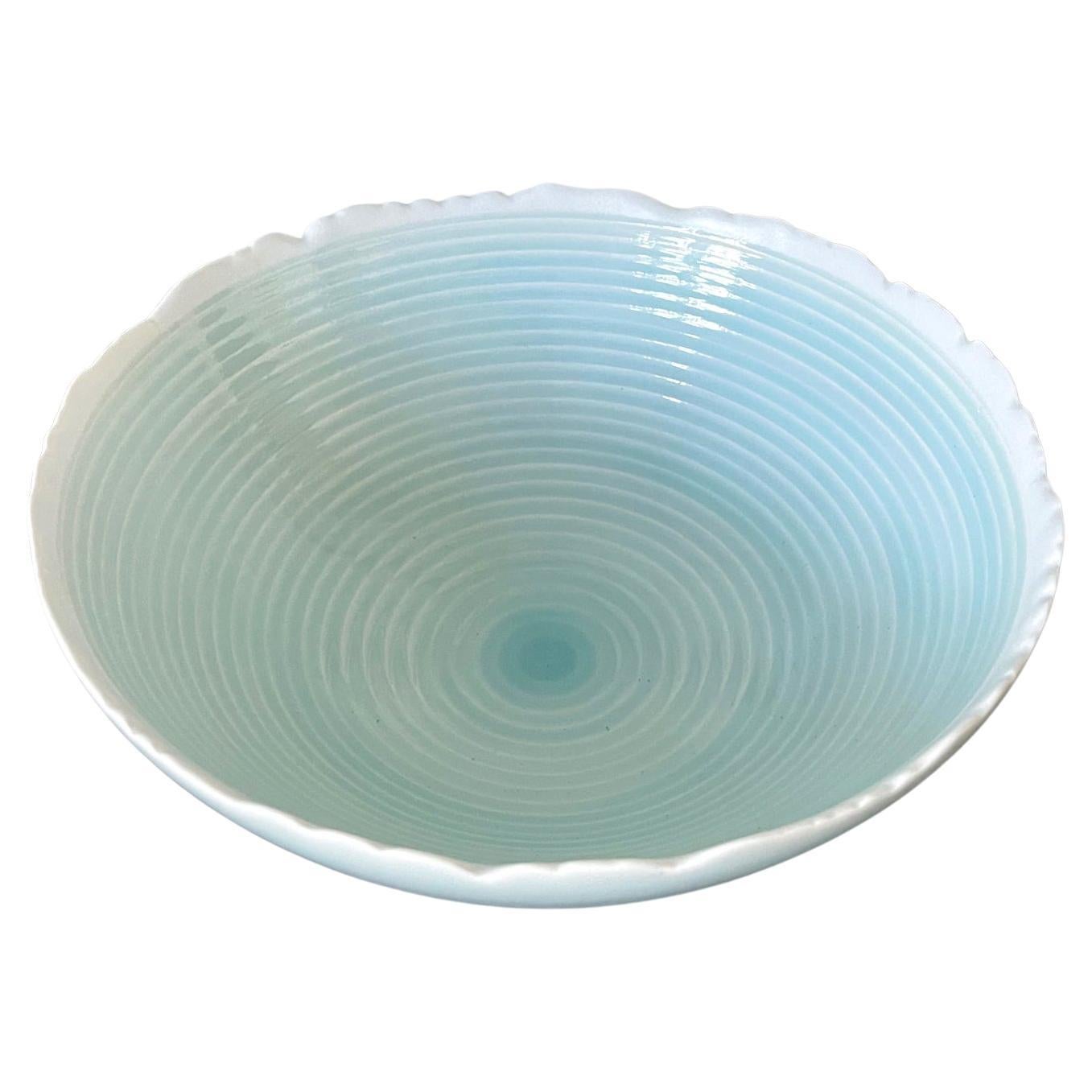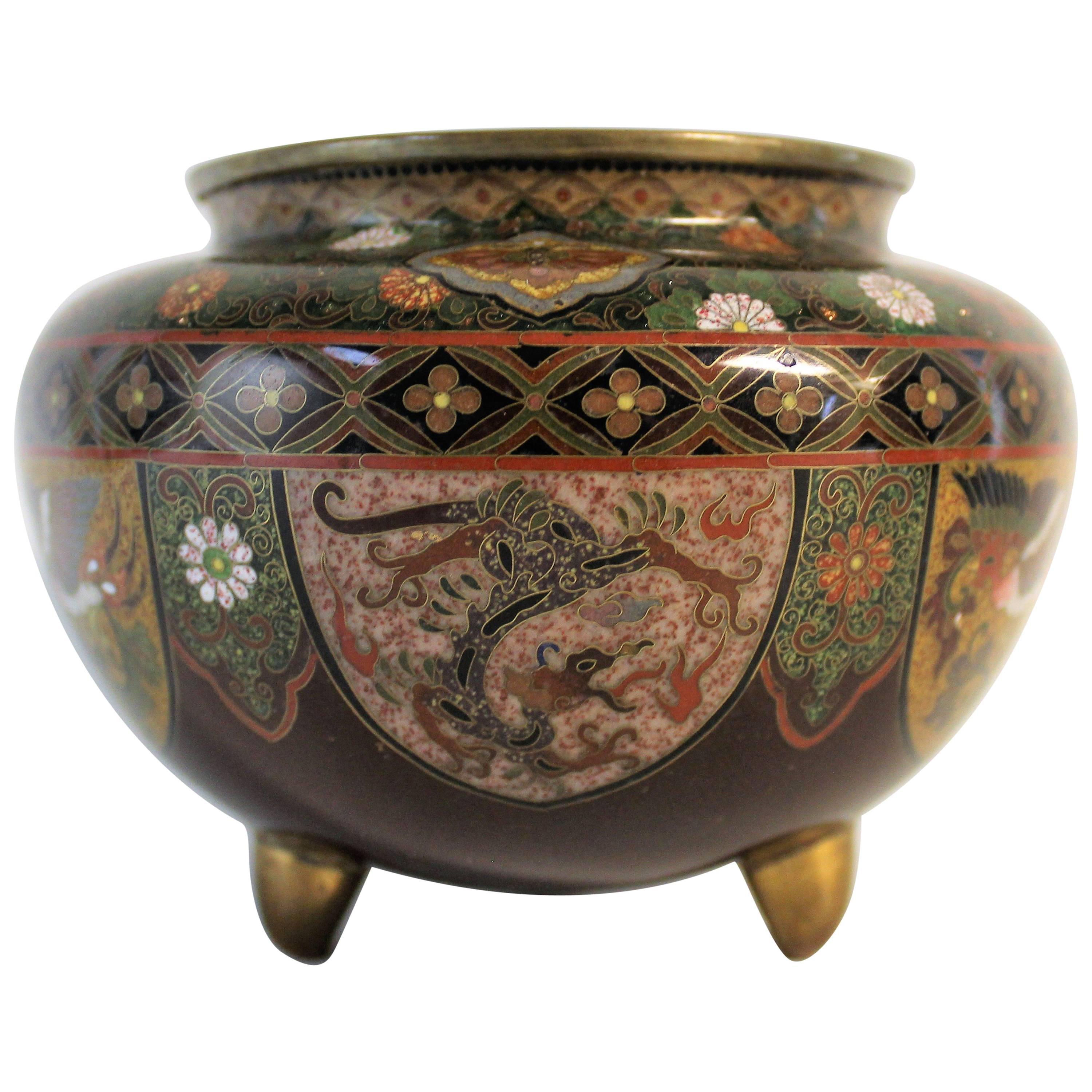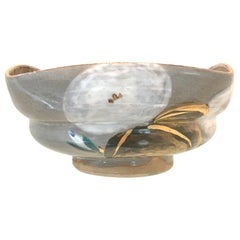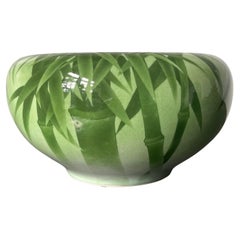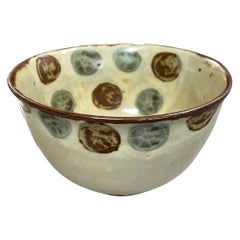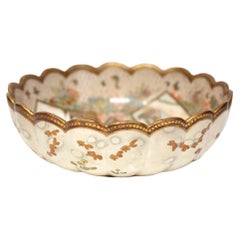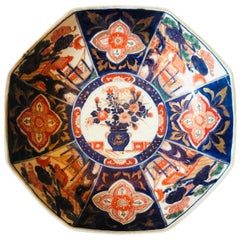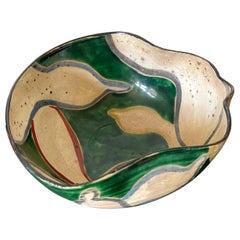
Japanese Ceramic Bowl Meiji Period Style of Ogata Kenzan
View Similar Items
Want more images or videos?
Request additional images or videos from the seller
1 of 14
Japanese Ceramic Bowl Meiji Period Style of Ogata Kenzan
About the Item
- Dimensions:Height: 4 in (10.16 cm)Diameter: 8 in (20.32 cm)Length: 4 in (10.16 cm)
- Style:Japonisme (Of the Period)
- Materials and Techniques:
- Place of Origin:
- Period:
- Date of Manufacture:Late 19th Century
- Condition:Wear consistent with age and use. Fine condition with age appropriate wear, scattered glaze wear on surface as shown, minor spotty glaze losses on the rim.
- Seller Location:Atlanta, GA
- Reference Number:1stDibs: LU945025529392
About the Seller
5.0
Platinum Seller
These expertly vetted sellers are 1stDibs' most experienced sellers and are rated highest by our customers.
Established in 2006
1stDibs seller since 2010
478 sales on 1stDibs
More From This SellerView All
- Japanese Ceramic Dish Meiji Ogata KenzanLocated in Atlanta, GAA Japanese ceramic shallow dish in square form with rounded corners from Meiji period in the style of Ogata Kenzan. The dish features a cream color crackl...Category
Antique 19th Century Japanese Meiji Ceramics
MaterialsCeramic
- Japanese Ceramic Bowl Makuzu Kozan Utusushi KenzanBy Makuzu KozanLocated in Atlanta, GAA rare ceramic bowl with over glaze painted decoration by Japanese imperial potter Makuzu Kozan ((1842–1916). Unlike the better known works Kozan made for the expositions in the west and export to the foreign market, this piece exemplifies his work for the domestic market and the tea ceremony. The bowl was made in the so called "Utusushi" Ogata Kenzan (1663-1743), an celebrated Edo painter and ceramicist. Utusushi is loosely translated as "in the spirit of". It is not at all a simple imitation of a master, but a Japanese concept of embracing the spiritual essence of a master while the creator is free to mix in his or her own unique artistic interpretation and flavor. The bowl was made to hold fruits during the tea ceremony. It has a very distinguished form with a circular lower body morphing into a square upper portion that further opening with flared rim. The surface has a grey glaze onto which Asagao flowers (Japanese morning glory) on the vines were painted in a free and poetic style. White was used for the petals, green for the leaves with touches of gold highlight. Asagao, the symbol of the summer was rendered in the spirit of Ogata Kenzan, and interestingly the shape of the blossom echoes the unique form the bowl. It was likely reserved for the tea ceremony during the summer months. Under the base, Kozan was signed in black on an white porcelain plaque inlay. For two similar examples of Kozan's work Utusushi Kenzan, see Page 168-169 of the book: Sekai ni Aisa Reta ya Kimono Miyagawa Kozan Makuzu...Category
Antique Early 1900s Japanese Japonisme Ceramics
MaterialsCeramic
- Japanese Ceramic Centerpiece Bowl Makuzu Kozan Meiji PeriodBy Makuzu KozanLocated in Atlanta, GAA beautiful ceramic vessel in the form of Bo, the so-called monk's alms bowl from the studio of Japanese Potter Makuzu Kozan, also known as Miyagawa Kozan (1842–1916), one of the most established and collected ceramist from Meiji Period. Born as Miyagawa Toranosuke, Kozan established his pottery studio in Yokohama circa 1870s and later became one of the appointed artists to the Japanese Imperial household. His work was exhibited in many international fairs that the Meiji government participated at the turn of the century and won many grand prizes. Of a relatively large size, this piece was made as a decorative center piece for display. It was brilliantly decorated with underglaze paint of a green-on-green bamboo motif, using the novel technique developed by Kozan called Fuki-e (the blow painting). As a result, the bamboos appear took on a three-dimensional quality as if appearing in a mist. Known as one of the most creative ceramists, circa 1887, Kozan started experimenting with new chemical colors from the West in the format of his porcelain glaze. New colors allowed him to create underglaze design that appeared bright, smooth and glossy. To create design that is realistic and dimensional, more common in the western paintings, he was inspired by the native Japanese ink painting technique developed around 1900 by Yokoyama Taikan...Category
Antique Early 1900s Japanese Japonisme Ceramics
MaterialsCeramic
- Rare Japanese Ceramic Glazed Bowl Makuzu Kozan Meiji PeriodBy Makuzu KozanLocated in Atlanta, GAOn offer is a rare ceramic bowl with overglazed design by the famed Japanese ceramic artist Makuzu Kozan (1842-1916), circa 1906-1916. The bowl is rather unusual from the potter's repertoire with its unique glaze colors and decoration, and it likely belonged to a small series that Kozan made in and after 1906. A bowl of similar glaze and nearly identical dragon motif was recorded as a diplomatic present to the British royalty Arthur Connaught (1883-1932) when he represented King Gorge V in Japan in 1906. Other pieces, such as this bowl, were likely made with similar materials and designs afterwards. Essentially round in form, the bowl has a generous volume with six harmonious lobes. The bottom of the interior showcases a coiled dragon in red, green and gold slithering on a cobalt blue background. The roundel shares an echoing lobed perimeter, which is further outlined by red and turquois bands and rising sun design. The exterior of the bowl features six stylized Japanese camellias...Category
Antique Early 1900s Japanese Japonisme Ceramics
MaterialsCeramic
- Japanese Mishima Ceramic Vase Meiji PeriodLocated in Atlanta, GAA Japanese long neck slender ceramic vase in the style of Mishima, circa 19th century, Meiji period. Mishima pottery was originally imported from three islands in Taiwan and then fro...Category
Antique 19th Century Japanese Japonisme Ceramics
MaterialsCeramic
- Japanese Ceramic Vase by Ito Tozan I Meiji PeriodBy Ito Tozan ILocated in Atlanta, GAThis stoneware vase of a jar form was finely decorated with low relief carving and delicate colored glazes depicting bundles of peony flowers. It was made by Ito Tozan I (1846-1920) circa 1890-1900s in the late Meiji Period. The color pallet was both bold and subtle, with dark green and rusty leaves with golden outlines and white and light yellow peony petals covering much of the surface. Impressed with potter's mark on the base. Examples of two pieces by Ito Tozan I were in the collection of MNAAG (Guimet) Paris. Inventory no. MG 13790 an 13792. A vase with similar shape and decoration techniques is featured as Lot 1340 Fine Japanese Art, 13 Sep 2017 Bonhams New York Tozan Ito I established his ceramic business in Kyoto 1867. His studio made both porcelain and stoneware in a style some considered Satsuma while they retained a sophistication of Kyoto ware...Category
Antique 1890s Japanese Japonisme Ceramics
MaterialsCeramic
You May Also Like
- Ogata Kenzan Signed Japanese Asian Edo Period Pottery Tea Bowl ChawanLocated in Studio City, CAA spectacularly designed and beautifully made Chawan tea bowl dating back to the Edo period. This work is attributed to Ogata Kenzan who is widely conside...Category
Antique 18th Century Japanese Edo Ceramics
MaterialsPottery
- Japanese Meiji Period Satsuma Bowl Signed SuizanLocated in Newark, EnglandJapanese Meiji period satsuma scalloped shaped bowl. The bowl of beautiful form with gilt pin-striping and dotting to the accented areas. The exterior decorated with multiple fish swimming around the outside with small flower sprays between. To the inside a painted netting covers the bowl with butterflies and further floral sprays. The centre decorated with representations of each of the woodcut prints from Hiroshige's Tokaido gojusan tsugi (53 Stations of the Tokaido Road). To the base a stylised cartouche signature within an oval for Suizan. This Japanese satsuma bowl...Category
Antique Late 19th Century Japanese Meiji Ceramics
MaterialsCeramic, Earthenware, Pottery
- Meiji Period Large Japanese Imari Bowl CenterpieceBy Imari PorcelainLocated in Vero Beach, FLMeiji period large Japanese Imari bowl centerpiece This large, distinctive, octagonal porcelain Imari bowl is painted in rich, inky blue, co...Category
Antique 19th Century Japanese Meiji Ceramics
MaterialsPorcelain
- Japanese Meiji Period Fukagawa Porcelain Charger, circa 1890sLocated in Takarazuka, JPExquisite late 19th century Japanese Fukagawa porcelain charger, circa 1890s, Meiji period (1868-1912).It depicts rocks and auspicious chry...Category
Antique 1890s Japanese Meiji Decorative Dishes and Vide-Poche
MaterialsGold
- Japanese Meiji Period Gold Cobalt Blue Porcelain Charger, circa 1880Located in Takarazuka, JPExquisite Japanese late-19th century Imari Meiji period (circa 1880) signed porcelain charger in iron-red, cobalt blue and green. It showcases three panels with floral pattern on a dramatic gold background with shishi lions strolling. The panels are set against a stunning cobalt blue background adorned with generous gold details. The three small circles around the rim showcase plum blossom, pine and bamboo patterns, together they create a stunning auspicious “sho-Chiku-bai”. This stunning contrast creates a beautiful scene that invite the viewer to get closer to explore the details. The reverse side is decorated with underglaze cobalt blue hand-painting with the artist signature at the center. The late father of the collector of this exquisite pair, who operated one of the leading kilns in the historic Imari-Arita region of Japan, travelled extensively to Europe in the early 1960s with a mission that he led, to purchase and bring back to Japan antique ceramics...Category
Antique 1880s Japanese Meiji Decorative Dishes and Vide-Poche
MaterialsPorcelain
- Handcrafted Japanese Ceramic Bowl Signed Jin KobayashiLocated in North Hollywood, CAHandcrafted Japanese ceramic bowl signed Jin Kobayashi. Large stoneware plate hand made and hand painted with autumn leaves design. Hand-carved ge...Category
Mid-20th Century Japanese Folk Art Decorative Bowls
MaterialsStoneware
Recently Viewed
View AllMore Ways To Browse
Meiji Period Bowl
Japanese Gourd
Brown Japanese Ceramic Bowl
Antique Japanese Ceramic Marks
Square Ceramic Bowl
Kyoto Ware
Japanese Kutani Ware
Kutani Ware
Antique Kutani Marks
Kutani Bowl
Japanese Kutani Bowl
Gourd Bowl
Ogata Kenzan
Large Blue And White Chinese
Chinese Export Porcelain Blue And White
Blue White Chinese Export Porcelain
Blue And White Chinese Export Porcelain
Red Imari
